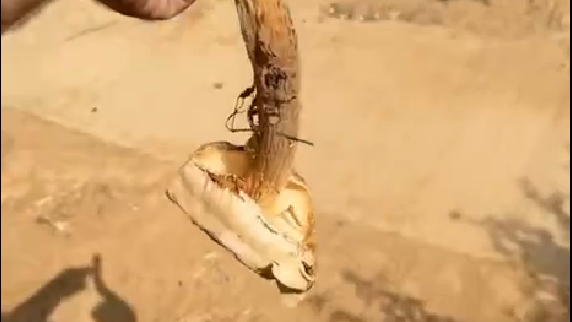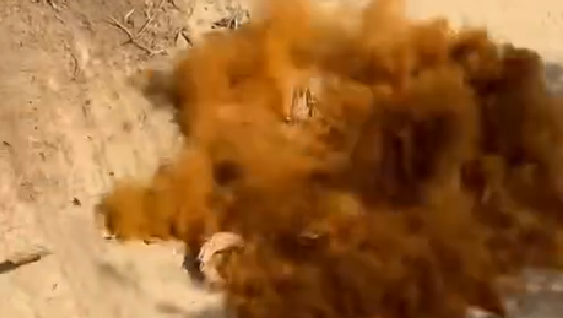Getting your Trinity Audio player ready...
When Gal Zohar from the northern Negev village of Peduim spotted a dry-looking mushroom on the sandy ground, he didn’t imagine what he was in for. Capturing the moment on video, he picked up the mushroom and threw it back down – triggering an unexpected reaction. The mushroom exploded, releasing a fine, rusty-brown powder.
A later analysis identified the mushroom as Battarrea phalloides, also known as the desert stalked puffball. The video quickly went viral on social media, sparking fascination with the phenomenon.
An exploding fungus
Mycologist Yonatan Gur, manager of the Steinhardt Museum’s fungal collection at Tel Aviv University, shed light on the species, explaining the mushroom’s unique anatomy, the nature of its powdery spores, and possible uses.
The Battarrea phalloides, from the Agaricaceae family, was once known as the sandy stalked puffball, since it was initially found in sandy environments. It now grows in various habitats, which led to its renaming. According to Gur, the young reproductive structure of the mushroom develops underground and resembles a ball, egg, or bulb, reaching a diameter of about 1.5 to 2 inches (4-5 cm). Its outer layer is whitish and eventually sheds, allowing the mature structure to emerge. The mushroom's stalk is thickened and can grow up to nearly 16 inches (40 cm).
“The desert stalked puffball thrives in hot climates, and one of its fascinating features is that the spores are concentrated at its top – in a flattened, cap-like structure known as the gleba, which ranges in diameter from about 0.8 to 5 inches (2-12 cm),” Gur explains. “The gleba’s surface is smooth and whitish, but as it matures, it falls away to reveal a layer of spores resembling rusty-brown powder.”
The spores of the desert stalked puffball are nearly spherical and slightly oval, finer than sand grains, yet visible under a microscope. According to Gur, “The ‘explosion’ is actually the dispersion of these spores, in a process similar to that of the puffball mushroom, though the desert stalked puffball is larger.” Typically, rain or wind spreads the spores, allowing the mushroom to proliferate through its microscopic powder.
In Israel, this mushroom is relatively common, growing in sandy soils, eucalyptus groves, and under acacia trees from winter to early summer. "In Argentina, its spores are used in folk medicine to treat wounds. However, from a health standpoint, inhaling large quantities of the spores is not recommended, as it may trigger an allergic reaction," Gur adds.
Get the Ynetnews app on your smartphone:






